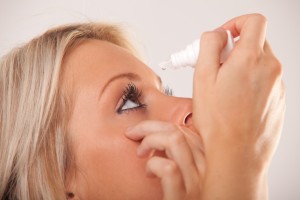Posted by: Georgia Eye Physicians and Surgeons in Latest News
We’ve all experienced the familiar scratchy, burning sensation associated with dry eyes, but for some that persistently irritating condition never seems to go away. Studies show that close to 8 percent of women age 50 or older in the United States and about 4 percent of men in that same group experience symptoms of chronic dry eye, a condition that, if left untreated, can serious impact your vision and eye health. Here is some helpful information about the causes of chronic dry eye, as well as an explanation of some of the ways that the condition can be treated.

While the early symptoms of dry eye can seem like only minor irritants, the condition can actually be relatively serious. If allowed to continue for a prolonged period of time, chronic dry eye can lead to an increased risk of developing serious eye infections and even long-term damage to the surface of the eyes themselves in the form of corneal ulcers. Fortunately there are a number of treatment options available. Mild cases can generally be treated with artificial tears or an anti-inflammatory medication like cyclosporine, which decreases corneal damage, increases basic tear production, and reduces symptoms of dry eye. In some cases dietary supplements of omega-3 fatty acids may also decrease irritation. More severe and chronic cases may require the use of tiny punctual plugs, which are inserted into the tear drains at the corners of the upper and lower eyelids. Restricting the amount of fluid that can drain from the eye conserves naturally-occurring tears and keeps the eye better lubricated. These tear plugs come in either silicone (permanent) or collagen (dissolvable) varieties and the dissolvable variety are frequently used to keep the eyes well moistened following many forms of eye surgery.
Chronic dry eye is just one of the many different eye conditions that we can treat at Georgia Eye Physicians and Surgeons. If you have any concerns about the health of your eyes, or would like to schedule an eye exam, please contact Dr. William Segal or Dr. Marc Lay today to make an appointment. Be sure to follow us on Facebook, Twitter, and Google+ for more information on how to keep your vision at its best.

